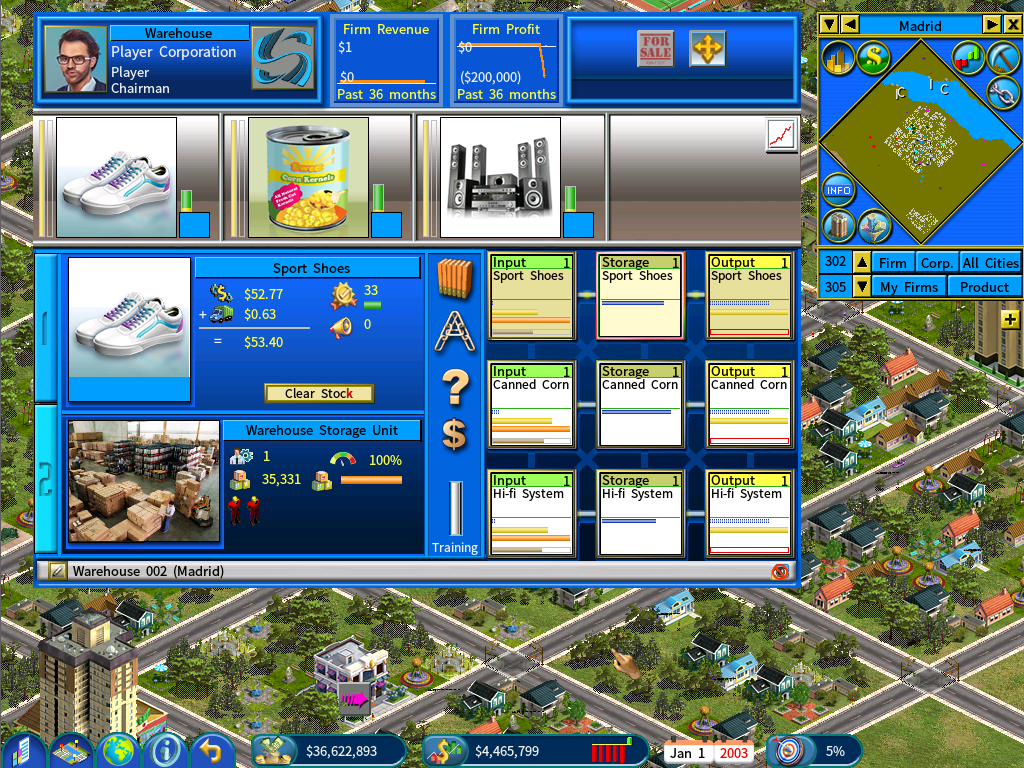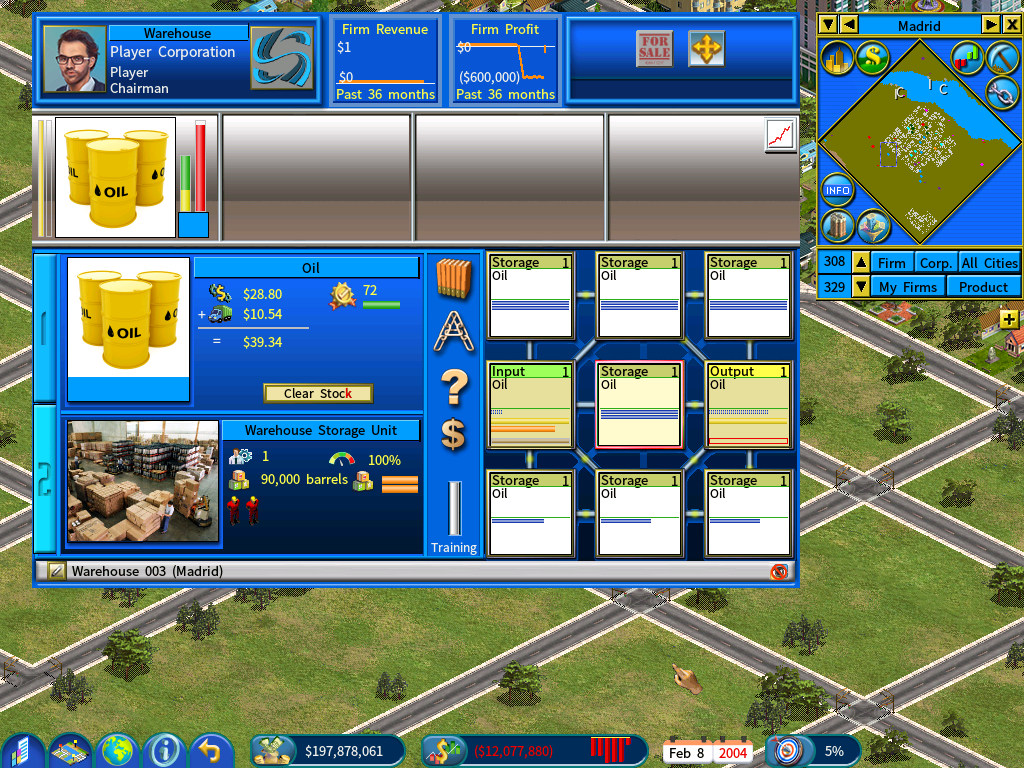Warehouse
Now you may set up warehouses to maintain consistency in your supply chains, including supplying raw materials to your factories and supplying finished goods to your retail stores.
You may set up your warehouse with a large storage capacity and have it input from multiple sources to minimize supply inconsistency, which is otherwise often experienced with agricultural products with seasonal supply fluctuation.

This warehouse keeps an inventory of electronic goods for your retail need.
Characteristics of Warehouses
The setup and operating costs of warehouses are significantly lower than factories.
You may store raw materials or finished goods in your warehouse.
Warehouses are available in 2 different sizes. The larger version of the warehouse has double the capacity and throughout of the standard one.

This warehouse keeps an inventory of electronic goods for your retail need.
Functional Units in Warehouses
You may set up the following functional units in your warehouse.
Warehouse Input Unit – it functions similar to the Purchasing Unit
Warehouse Storage Unit – it functions similar to the Inventory Unit
Warehouse Output Unit – it functions similar to the Sale Unit
The storage capacity and throughout of the above units is 3 times as much as similar purchasing, sale and inventory units in factories.
In addition, you may also set up the following units in your warehouse:
Private Labeling Unit – it allows you to convert products purchased from a third-party supplier into your own brand.
Advertising Unit – it allows you to advertise the products in your warehouse. If you are doing private labeling in your warehouse, it will be convenient to use this unit to set up advertising for the products.

You have built a warehouse for storing a massive amount of crude oil, in anticipation of rising oil prices.
